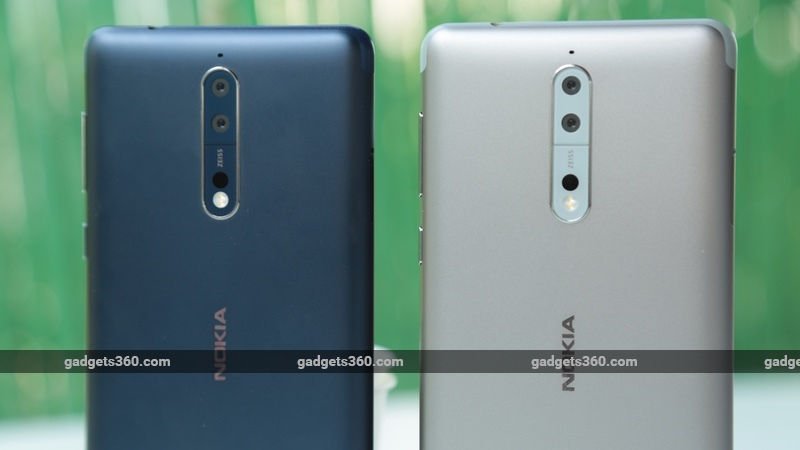

HMD Global last year launched the Nokia 8 as its top-notch camera smartphone – the company’s first with Carl Zeiss optics. While the company is offering compelling features a dual camera setup and ‘bothie’ mode to take on the competition, DxOMark camera rankings show poor results for the Nokia 8. The DxOMark team points out some key improvement areas that could make the latest Nokia flagship a better option against the top-end models from Apple, Samsung, Huawei, and other brands.
Unlike the iPhone X that achieved an overall score of 97 or the Samsung Galaxy Note 8 that scored 94, the Nokia 8 has received a significantly low rating in DxOMark review, with a total score of 68. The smartphone sits just below the Lava Z25, however, it acquires a better position against the Nokia 808 PureView that received a score of 61 from the DxOMark team.
DxOMark reports that the primary camera of the Nokia 8 produces “nice images” in some situations, with a good amount of exposure and usually with accurate white balance. But sometimes, the team observed that the images show quite low levels of saturation and some noticeable colour rendering differences between centre and edges of the frame. On the part of the dynamic range, it is found to be good but only when the preloaded Auto HDR mode is enabled.
Some noticeable lags are spotted in terms of texture and noise that affect the camera performance of the Nokia 8. Among other environments, fairly strong noise is claimed to be visible in plain colour areas even in bright light, and levels of details are also generally low with a full of blurred details and textures. The detailing in shots decreases further in indoor and low-light shooting conditions. Also, the DxOMark team has spotted that the Nokia 8 suffers from a very noticeable loss of sharpness in the field, though strong softness often visible near frame edges.
The Nokia 8 uses contrast detection, phase detection, and laser technologies. This mix, the DxO team reports, enables the autofocus system of the smartphone to produce accurate results in most situations. However, the results are comparatively poor in lower light. It is also noticed that the exposure and colour are decent when the smartphone uses the built-in dual-LED flash, though some noticeable red-eye effect exists especially in flash portrait shots.
Despite the fact that the dual camera setup of the Nokia 8 supports 2x zoom, DxOMark recommends the optical zoom factor only for emergency situations as there isn’t any dedicated telephoto lens or a higher resolution secondary image sensor to maintain a balance between zooming and non-zooming results. Nevertheless, the bokeh mode that blurs the background to highlight the foreground subjects is claimed to perform on a higher level than most of the competing offerings. There are some artifacts visible, but the mode delivers pleasant bokeh results.
Coming to the video results, DxOMark engineers highlight low autofocus and stabilisation sub-scores. The stabilisation system on the Nokia 8 is said to perform on a quite similar level as the Samsung Galaxy S6 Edge that was launched back in 2015. Similarly, the DxOMark team has observed that exposure stepping on the smartphone is noticeable when the illumination changes during recording, accompanies low levels of details. Having said that, video clips recorded from the Nokia 8 are found to show good target exposure and colour rendering in bright light and well-lit indoor conditions.
The dual camera setup of the Nokia 8 (Review) includes two 13-megapixel image sensors – while one is an RGB sensor and comes with optical image stabilisation (OIS), the other one is a monochrome sensor. Both are packed with an aperture of f/2.0, 1.12-micron pixel elements, phase detection autofocus, a 76.9-degree wide-angle lens, phase detection autofocus (PDAF), dual-tone LED flash, and an IR rangefinder. A 13-megapixel image sensor is available on the front with PDAF, 1.12-micron pixels, an f/2.0 aperture, and a 78.4-degree wide-angle lens. The smartphone also has OZO Audio technology that enables spatial 360-degree audio recording using three embedded microphones.
[“source=gadgets.ndtv”]

